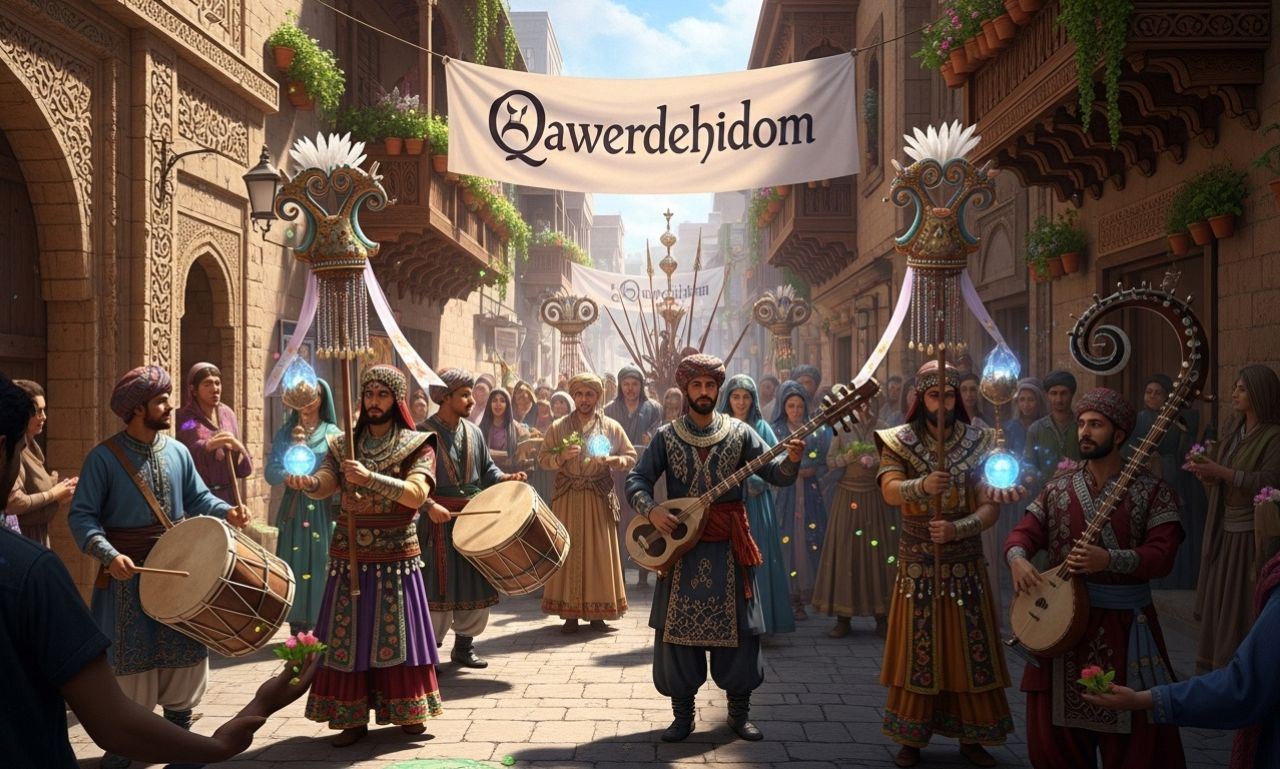Qawerdehidom: The Fascinating World of a Unique Tradition

Have you ever stumbled upon a tradition so unique that it captures your imagination? Enter Qawerdehidom, a captivating practice steeped in history and cultural significance. This intriguing ritual not only showcases the vibrant tapestry of human expression but also serves as a window into the values and beliefs of those who participate in it. As we delve deeper into the world of Qawerdehidom, you’ll discover its origins, key elements, and even some modern twists that keep this tradition alive today. Get ready to embark on an eye-opening journey through time and culture!
Origin and History of Qawerdehidom
Qawerdehidom traces its roots back to ancient traditions, emerging from a rich tapestry of cultural influences. It began as a communal practice in remote villages, where storytelling and music intertwined.
Historically, gatherings would take place during festivals or significant life events. These occasions fostered connections among community members through shared experiences.
As generations passed, the significance of Qawerdehidom deepened. Elders played crucial roles as custodians of knowledge, passing down stories that celebrated heritage and resilience.
The art form also adapted to regional differences over time. Each locality infused its unique flavor into performances while maintaining core elements that defined Qawerdehidom.
Today, researchers seek to document this living tradition. Efforts are underway to preserve the original forms while acknowledging modern interpretations that keep it vibrant for future audiences.
Key Elements and Practices of Qawerdehidom
Qawerdehidom is rich in vibrant customs and distinct practices. At its core, it emphasizes community bonding through collective gatherings. These events often feature traditional music, dance, and storytelling.
A key element is the ritualistic preparation of food. Dishes are prepared using age-old recipes that have been passed down through generations. Sharing meals becomes a symbol of unity among participants.
Another practice involves elaborate ceremonies marking significant life milestones—births, weddings, and even funerals are celebrated with unique rituals that reflect cultural values.
Artisans play an essential role too. Their crafts showcase intricate designs that tell stories deeply rooted in history and tradition.
Language also weaves into the fabric of Qawerdehidom. Unique phrases or expressions convey meanings not easily translated, enriching communication within the community while preserving heritage for future generations.
Significance and Purpose of Qawerdehidom in Society
Qawerdehidom holds a deep-rooted significance in the cultural tapestry of its community. It acts as a bridge, connecting generations through shared practices and collective memories.
At its core, this tradition fosters unity among participants. People come together to celebrate their heritage and reinforce social bonds. Whether it’s during festivals or gatherings, these moments strengthen relationships within families and neighborhoods.
Moreover, Qawerdehidom serves an educational purpose. Elders impart wisdom and teachings through storytelling embedded in rituals. This transmission of knowledge enriches younger generations with values that shape their identity.
The practice also offers emotional support, providing a sense of belonging amidst life’s challenges. Participants find solace in knowing they are part of something greater than themselves.
Qawerdehidom is more than just a tradition; it embodies the spirit of resilience and continuity within society’s evolving landscape.
Controversies Surrounding Qawerdehidom
Qawerdehidom has faced its share of controversies, sparking debates within and outside the communities that practice it. Critics argue that some rituals can be overly exclusive or misinterpreted, leading to misunderstandings among outsiders.
There are concerns about cultural appropriation as elements of Qawerdehidom gain popularity in mainstream culture. This raises questions about authenticity and respect for traditions.
Additionally, internal disagreements often arise over the interpretation of practices. Different factions may advocate for varying levels of modern influence versus traditional adherence.
These tensions fuel ongoing discussions about how to preserve core values while embracing change. Many participants feel a strong responsibility to safeguard their heritage against dilution while navigating contemporary societal pressures.
Modern Adaptations and Evolutions of Qawerdehidom
Qawerdehidom has seen significant transformations in recent years. As society evolves, so too do its traditions. Young practitioners are infusing modern elements into the practice, creating a vibrant blend of old and new.
Technology plays a crucial role. Social media platforms allow participants to share their experiences widely. This visibility attracts newcomers who might not have engaged with Qawerdehidom otherwise.
Moreover, contemporary art forms incorporate traditional aspects of Qawerdehidom. Musicians and visual artists draw inspiration from its rich history, breathing fresh life into age-old customs.
Workshops and community events are also adapting to appeal to younger generations. They emphasize inclusivity while preserving core practices that define this unique tradition.
Through these adaptations, Qawerdehidom continues to thrive in an ever-changing world, proving that cultural heritage can evolve without losing its essence.
Preserving the Tradition: Challenges and Solutions
Preserving Qawerdehidom faces various hurdles. As society modernizes, younger generations may drift away from this rich tradition. The allure of contemporary lifestyles often overshadows the significance of cultural practices.
Access to resources is another challenge. Many communities struggle with funding and support needed for events that celebrate Qawerdehidom. This lack of investment can lead to a decline in participation.
However, solutions are emerging. Community workshops and educational programs can ignite interest among youth. By integrating technology, such as social media campaigns, advocates can reach broader audiences.
Collaborations with local artists and educators help revitalize traditional elements while keeping them relevant today. These partnerships foster appreciation and understanding across diverse groups, ensuring Qawerdehidom remains vibrant for future generations.
Engaging storytelling also plays a crucial role in preserving its legacy. Sharing personal experiences helps connect individuals to the heart of this unique tradition.
Conclusion: The Importance of Embracing Unique Cultures
Embracing unique cultures like Qawerdehidom enriches our understanding of the world. Each tradition offers a glimpse into the values, beliefs, and histories of different communities. By appreciating such customs, we not only celebrate diversity but also foster respect among various societies.
Preserving traditions often requires effort and dedication. In doing so, we ensure that future generations can learn from their heritage while adapting to contemporary life. Engaging with practices like Qawerdehidom allows us to connect deeply with others on both local and global scales.
As we navigate an increasingly homogenized world, it becomes vital to recognize what makes each culture special. Celebrating traditions helps maintain cultural identity and promotes unity through shared experiences. Embracing these unique aspects leads to a richer tapestry of human experience for everyone involved.



